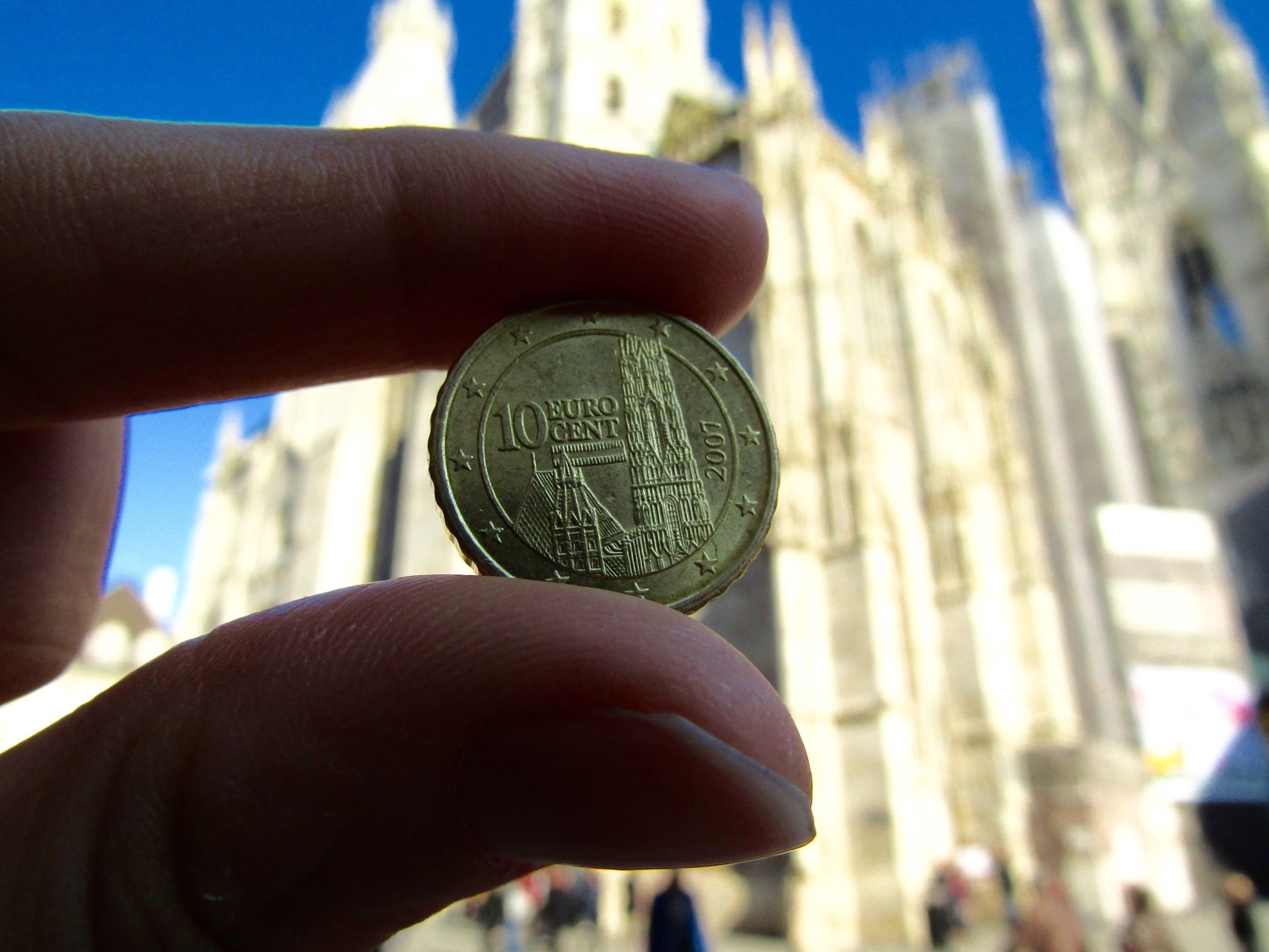Vienna doesn’t have a “must see” landmark like Paris’s Eiffel Tower or Rome’s Colosseum, but finding great sights in the Austrian capital certainly isn’t a problem. On a clear and cool day 39, we had a full itinerary ahead of us.
We took the metro to the Hietzing district, home to the 18th century Schönbrunn Palace. While most of our fellow passengers headed left to the palace gates, we turned right into the neighborhood in search of Café Dommayer.
The historic cafe was full of locals on a Friday morning. The host, dressed in a tuxedo, showed us to an open table and patiently explained the mostly-German menu. As we enjoyed our cake, coffee and the International New York Times newspaper, he offered to take a photo of us. It was a great way to ease into the day.
We entered the grounds of Schönbrunn Palace through the western Hietzinger Gate. The park portion of the grounds was quiet as only a handful of people had ventured away from the palace. The trees were still bare from the winter, but a few tiny blooms indicated spring was just around the corner.
The next stop was the Naschmarkt, a nearly-mile-long public market established in the 16th century. Originally, the market offered bottled milk and in the late 1700s added local produce. Today’s market is largely aimed at tourists and features one of the best lunch deals in town. At several stands, you can get 20 falafels for just 2 euros, but watch out for the add-ons or you might be leaving with more hummus and olives than you could eat in a week.
In the afternoon, we returned to the historic city center for a walking tour of the Stephansplatz area. Stephansplatz itself is a popular public square named for nearby St. Stephen’s Cathedral. Lined with big-name shops, it’s also packed with tourists, but the side streets offer a quick escape from the crowds.
St. Stephen’s Cathedral was built in 1340 and is featured on the reverse of Austria’s version of the 10 euro cents coin. The facade is the standard Gothic style cathedrals found throughout Europe, but the real highlight is the roof, decorated in bright colors and designs using more than 230,000 glazed tiles. Walking down Singerstrasse, you can see the impressive double-headed eagle emblem of the Habsburg Empire.
The cathedral’s 23 bells can be heard throughout town. Local legend has it that Beethoven realized the totality of his progressive hearing impairment when he saw the birds scatter from the ringing of the bells but could not hear the ringing himself.
Over the course of a couple hours, we saw one of Mozart’s former residences, a wall illustrated with the story of a monster defeated by a baker’s mirror, and a whole lot of churches. The Ankeruhr clock was one of the highlights of the walk. Located in the Hoher Markt neighborhood, the 100-year-old Art Nouveau piece survived heavy bombing during WWII that destroyed the rest of the once-opulent neighborhood.
Our long day out ended at the Volksoper for a performance of the Italian opera La Traviata. Built in 1898 as a playhouse, it became a public opera house in 1903 and hosts around 300 performances annually. The performance was sung in Italian with German subtitles, but the beauty of the performance and the surroundings translated just fine.










More Photo of the Day posts from our January-March 2016 trip to Europe


nice shot!
Viktoria nailed this shot!